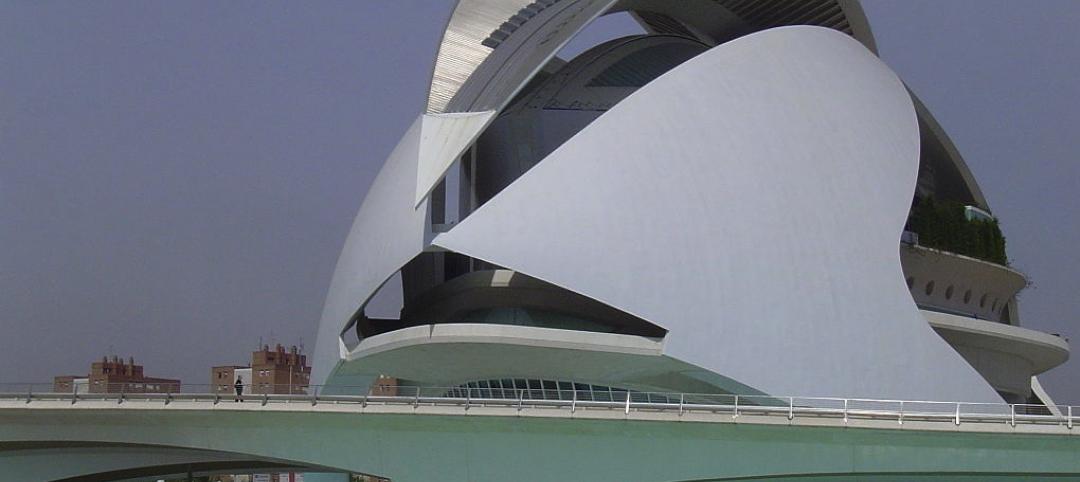Fifty years after the John F. Kennedy Center for the Performing Arts opened in Washington, D.C., construction work on a 65,000-sf expansion to the facility began.
Designed by Steven Holl and BNIM, the project is being funded privately, and will be located south of the current facility. Functioning as an interactive space where artists and the community can come together, it will include spaces for rehearsal and education, as well as multi-use indoor and outdoor areas.
The building is meant to fuse the Potomac River and the landscape, the architects said. A grove made up of 35 ginkgo trees will remind visitors that Kennedy was America's 35th president, and an infinity pool will give visitors a direct sightline to Theodore Roosevelt Island.
Of the connection between the local landscape and the expansion, Steven Holl said in a statement: "The varied gardens will provide opportunities for casual performances and events and other flexible locations for enhanced engagement. The Kennedy Center’s connection to the Potomac River will finally be achieved, more than 50 years after it was lost in Edward Durell Stone’s initial design, allowing easy access to and from the Rock Creek Trail and the Georgetown waterfront."
The expansion is slated for completion on May 29, 2017, which would have been Kennedy's 100th birthday.
Related Stories
| May 30, 2014
Riding high: L.A., Chicago working on their version of the High Line elevated park
Cities around the U.S. are taking notice of New York's highly popular High Line elevated park system. Both Chicago and Los Angeles are currently working on High Line-like projects.
| May 29, 2014
7 cost-effective ways to make U.S. infrastructure more resilient
Moving critical elements to higher ground and designing for longer lifespans are just some of the ways cities and governments can make infrastructure more resilient to natural disasters and climate change, writes Richard Cavallaro, President of Skanska USA Civil.
| May 23, 2014
Big design, small package: AIA Chicago names 2014 Small Project Awards winners
Winning projects include an events center for Mies van der Rohe's landmark Farnsworth House and a new boathouse along the Chicago river.
| May 23, 2014
Top interior design trends: Gensler, HOK, FXFOWLE, Mancini Duffy weigh in
Tech-friendly furniture, “live walls,” sit-stand desks, and circadian lighting are among the emerging trends identified by leading interior designers.
| May 22, 2014
No time for a trip to Dubai? Team BlackSheep's drone flyover gives a bird's eye view [video]
Team BlackSheep—devotees of filmmaking with drones—has posted a fun video that takes viewers high over the city for spectacular vistas of a modern architectural showcase.
| May 22, 2014
IKEA to convert original store into company museum
Due to open next year, the museum is expected to attract 200,000 people annually to rural Älmhult, Sweden, home of the first ever IKEA store.
| May 21, 2014
Gehry unveils plan for renovation, expansion of Philadelphia Museum of Art [slideshow]
Gehry's final design reorganizes and expands the building, adding more than 169,000 sf of space, much of it below the iconic structure.
| May 20, 2014
Kinetic Architecture: New book explores innovations in active façades
The book, co-authored by Arup's Russell Fortmeyer, illustrates the various ways architects, consultants, and engineers approach energy and comfort by manipulating air, water, and light through the layers of passive and active building envelope systems.
| May 19, 2014
What can architects learn from nature’s 3.8 billion years of experience?
In a new report, HOK and Biomimicry 3.8 partnered to study how lessons from the temperate broadleaf forest biome, which houses many of the world’s largest population centers, can inform the design of the built environment.
| May 19, 2014
Calatrava wins court case concerning 'Calatrava bleeds you dry' website
A judge has ordered the left-wing political party Esquerra Unida to pay €30,000 to Santiago Calatrava because of "insulting and degrading" website.























